Charles M. Kozierok The TCP-IP Guide
Подождите немного. Документ загружается.


The TCP/IP Guide - Version 3.0 (Contents) ` 881 _ © 2001-2005 Charles M. Kozierok. All Rights Reserved.
Key Concept: TCP includes a special connection reset feature to allow devices to
deal with problem situations, such as half-open connections or the receipt of
unexpected message types. To use the feature, the device detecting the problem
sends a TCP segment with the RST (reset) flag set to 1. The receiving device either returns
to the LISTEN state, if it was in the process of connection establishment, or closes the
connection and returns to the CLOSED state pending a new session negotiation.
Idle Connection Management and "Keepalive" Messages
One final connection management issue in TCP is how to handle an idle connection; that is,
a TCP session that is active but that has no data being transmitted by either device for a
prolonged period of time. The TCP standard specifies that the appropriate action to take in
this situation is… nothing. The reason is that, strictly speaking, there is no need to do
anything to maintain an idle connection in TCP. The protocol is perfectly happy to allow both
devices to stop transmitting for a very long period of time, and then simply resume transmis-
sions of data and acknowledgment segments when either has data to send.
However, just as many people become “antsy” when they are on a telephone call and they
don’t hear anything for a long while, there was concern on the part of some TCP imple-
mentors that a TCP connection that was idle for a very long while might mean that the
connection had been broken.
Thus, TCP software often includes an “unofficial” feature that allows a device with a TCP
link to periodically send a null segment containing no data to its peer on the connection. If
the connection is still valid, the other device responds with a segment containing an
acknowledgment; if it is not, the other device will reply with a connection reset segment as
described above. These segments sometimes called TCP “keepalive” messages, or just
“keepalives”. They are analogous to BGP Keepalive messages.
The use of these messages is quite controversial, and therefore, not universal. Those who
are opposed to them argue that they are not really necessary, and that sending them repre-
sents a waste of internetwork bandwidth and a possible additional cost on metered links
(those that charge for each datagram sent.) Their key point is that if the connection is not
presently being used, it doesn’t matter if it is still valid or not; as soon as the connection is
used again, if it has broken in the mean time, TCP can handle that using the reset function
mentioned above.
Worse, sending a “keepalive” can in theory cause a good TCP session to be unnecessarily
broken. This may happen if the “keepalive” is sent during a time when there is an inter-
mittent failure between the client and server, a failure that might otherwise have corrected
itself by the time the next piece of “real” data must be sent. In addition, some TCP imple-
mentations may not properly deal with the receipt of these segments.
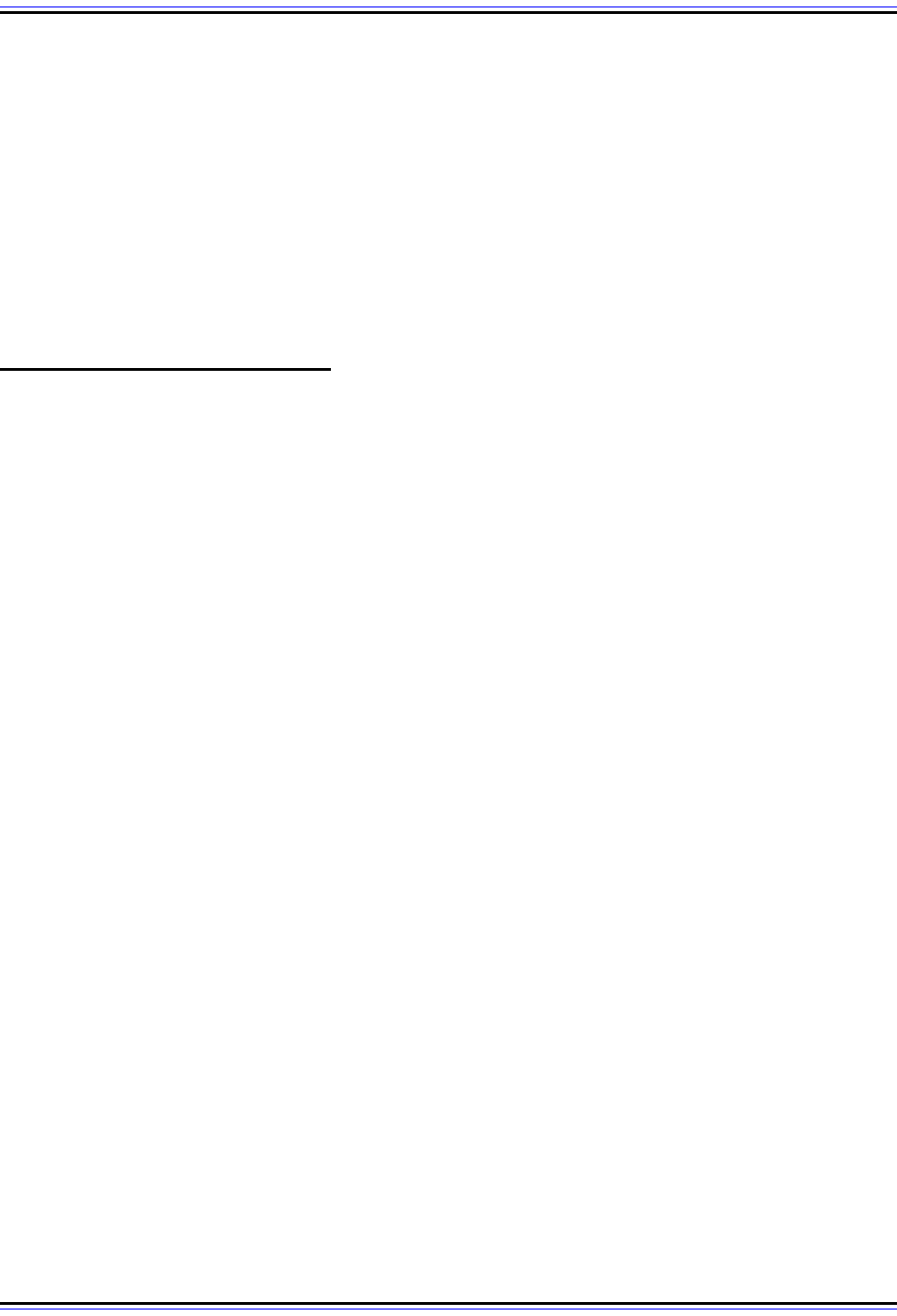
The TCP/IP Guide - Version 3.0 (Contents) ` 882 _ © 2001-2005 Charles M. Kozierok. All Rights Reserved.
Those in favor of using “keepalives” point out that each TCP connection consumes a certain
amount of resources, and this can be an issue especially for busy servers. If many clients
connect to such a server and don’t terminate the TCP connection properly, the server may
sit for a long time with an idle connection, using system memory and other resources that
could be applied elsewhere.
Since there is no wide acceptance on the use of this feature, devices implementing it
include a way to disable it if necessary. Devices are also programmed so they will not
terminate a connection simply as a result of not receiving a response to a single
“keepalive”. They may do so if they do not receive a reply after several such messages
have been sent over a period of time.
TCP Connection Termination
As the saying goes, “all good things must come to an end”… and so it is with TCP connec-
tions. The link between a pair of devices can remain open for a considerable period of time,
assuming that a problem doesn't force the connection to be aborted. Eventually, however,
one or both of the processes in the connection will run out of data to send and will shut
down the TCP session, or will be instructed by the user to do so.
Requirements and Issues In Connection Termination
Just as TCP follows an ordered sequence of operations to establish a connection, it
includes a specific procedure for terminating a connection. As with connection estab-
lishment, each of the devices moves from one state to the next to terminate the connection.
This process is more complicated than one might imagine it needs to be. In fact, an exami-
nation of the TCP finite state machine shows that there are more distinct states involved in
shutting down a connection than in setting one up.
The reason that connection termination is complex is that during normal operation, both of
the devices are sending and receiving data simultaneously. Usually, connection termination
begins with the process on just one device indicating to TCP that it wants to close the
connection. The matching process on the other device may not be aware that its peer wants
to end the connection at all. Several steps are required to ensure that the connection is shut
down gracefully by both devices, and that no data is lost in the process.
Ultimately, shut down of a TCP connection requires that the application processes on both
ends of the connection recognize that “the end is nigh” for the connection and stop sending
data. For this reason, connection termination is implemented so that each device termi-
nates its end of the connection separately. The act of closing the connection by one device
means that device will no longer send data, but can continue to receive it until the other
device has decided to stop sending. This allows all data that is pending to be sent by both
sides of the communication to be flushed before the connection is ended.
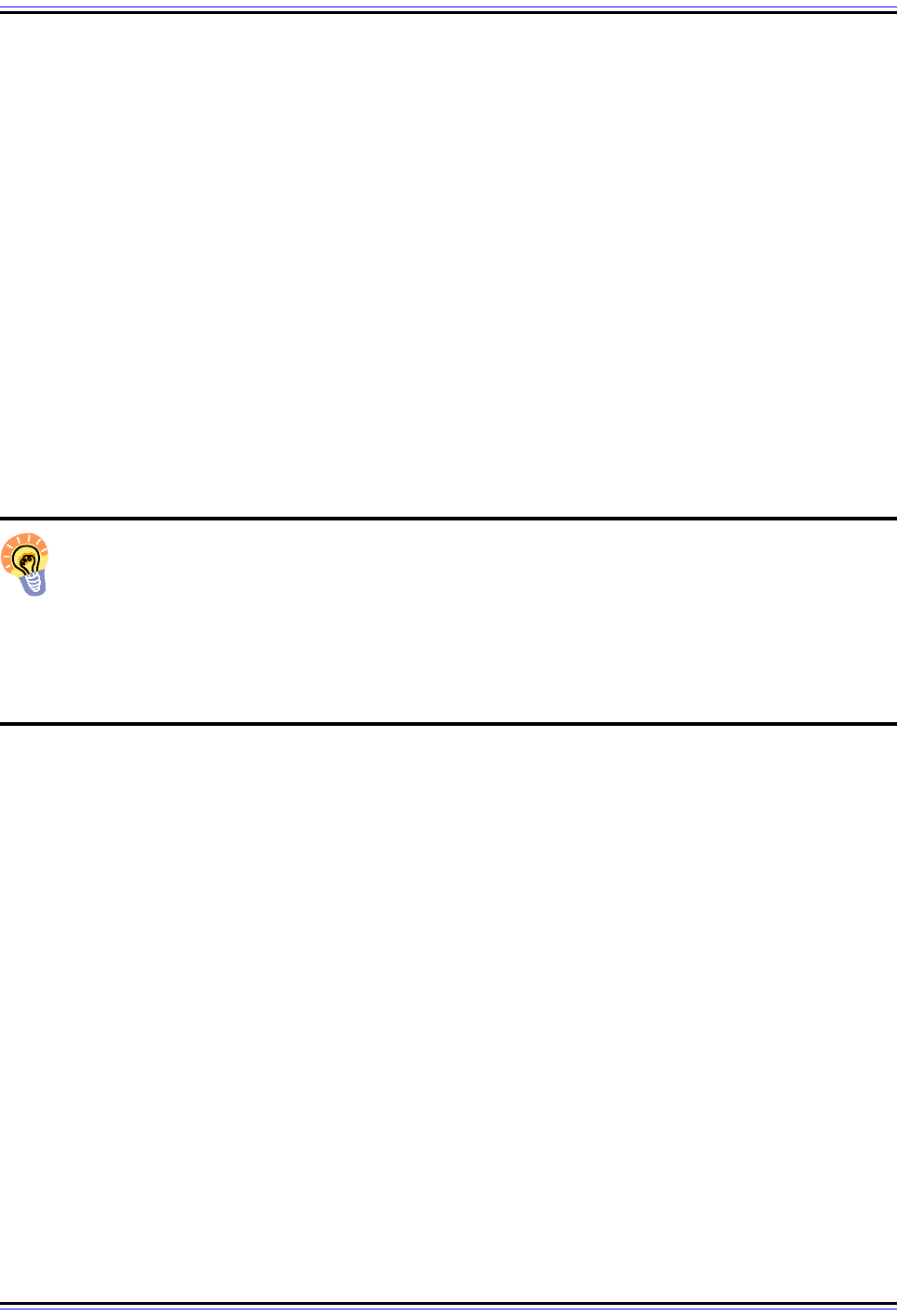
The TCP/IP Guide - Version 3.0 (Contents) ` 883 _ © 2001-2005 Charles M. Kozierok. All Rights Reserved.
Normal Connection Termination
In the normal case, each side terminates its end of the connection by sending a special
message with the FIN (finish) bit set. This message, sometimes called a FIN, serves as a
connection termination request to the other device, while also possibly carrying data like a
regular segment. The device receiving the FIN responds with an acknowledgment to the
FIN to indicate that it was received. The connection as a whole is not considered terminated
until both sides have finished the shut down procedure by sending a FIN and receiving an
ACK.
Thus, termination isn't a three-way handshake like establishment: it is a pair of two-way
handshakes. The states that the two devices in the connection move through during a
normal connection shutdown are different because the device initiating the shutdown must
behave differently than the one that receives the termination request. In particular, the TCP
on the device receiving the initial termination request must inform its application process
and wait for a signal that the process is ready to proceed. The initiating device doesn't need
to do this, since the application is what started the ball rolling in the first place.
Key Concept: A TCP connection is normally terminating using a special procedure
where each side independently closes its end of the link. It normally begins with one
of the application processes signalling to its TCP layer that the session is no longer
needed. That device sends a FIN message to tell the other device that it wants to end the
connection, which is acknowledged. When the responding device is ready, it too sends a
FIN that is acknowledged; after waiting a period of time for the ACK to be received, the
session is closed.
Table 155 describes in detail how the connection termination process works; the
progression of states and messages exchanged can also be seen in Figure 214. The table
is adapted from Table 152, describing the TCP finite state machine, but shows what
happens for both the server and the client over time during connection shutdown. Either
device can initiate connection termination; in this example I am assuming the client does it.
Each row shows the state each device begins in, what action it takes in that state and what
state to which it transitions. I have also shown the send and receive stages of both of the
steps for each of the client and server’s close operations.
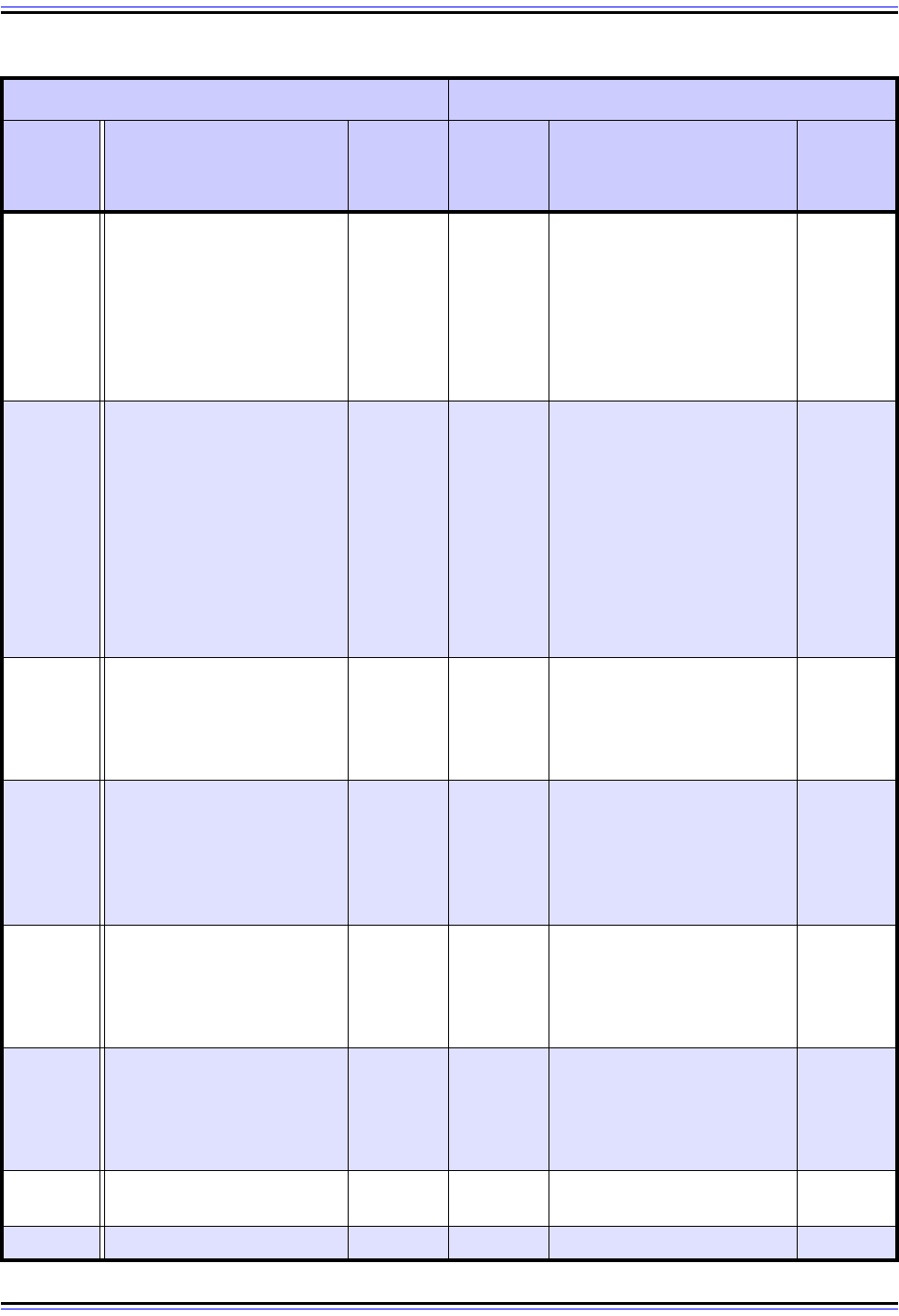
The TCP/IP Guide - Version 3.0 (Contents) ` 884 _ © 2001-2005 Charles M. Kozierok. All Rights Reserved.
Table 155: TCP Connection Termination Procedure
Client Server
Start
State
Action
Transi-
tions To
State
Start
State
Action
Transi-
tions To
State
ESTAB-
LISHED
Client Close Step #1
Transmit: The application
using TCP signals that the
connection is no longer
needed. The client TCP
sends a segment with the
FIN bit set to request that
the connection be closed.
FIN-
WAIT-1
ESTAB-
LISHED
At this stage the server is
still in normal operating
mode.
—
FIN-
WAIT-1
The client, having sent a
FIN, is waiting for it to both
be acknowledged and for
the serve to send its own
FIN. In this state the client
can still receive data from
the server but will no longer
accept data from its local
application to be sent to the
server.
—
ESTAB-
LISHED
Client Close Step #1
Receive and Step #2
Transmit: The server
receives the client's FIN. It
sends an ACK to
acknowledge the FIN. The
server must wait for the
application using it to be told
the other end is closing, so
the application here can
finish what it is doing.
CLOSE-
WAIT
FIN-
WAIT-1
Client Close Step #2
Receive: The client
receives the ACK for its
FIN. It must now wait for the
server to close.
FIN-
WAIT-2
CLOSE-
WAIT
The server waits for the
application process on its
end to signal that it is ready
to close.
—
FIN-
WAIT-2
The client is waiting for the
server's FIN.
—
CLOSE-
WAIT
Server Close Step #1
Transmit: The server's TCP
receives notice from the
local application that it is
done. The server sends its
FIN to the client.
LAST-
ACK
FIN-
WAIT-2
Server Close Step #1
Receive and Step #2
Transmit: The client
receives the server's FIN
and sends back an ACK.
TIME-
WAIT
LAST-
ACK
The server is waiting for an
ACK for the FIN it sent.
—
TIME-
WAIT
The client waits for a period
of time equal to double the
maximum segment life
(MSL) time, to ensure the
ACK it sent was received.
—
LAST-
ACK
Server Close Step #2
Receive: The server
receives the ACK to its FIN
and closes the connection.
CLOSED
TIME-
WAIT
The timer expires after
double the MSL time.
CLOSED CLOSED
The connection is closed on
the server's end.
CLOSED The connection is closed. CLOSED The connection is closed.
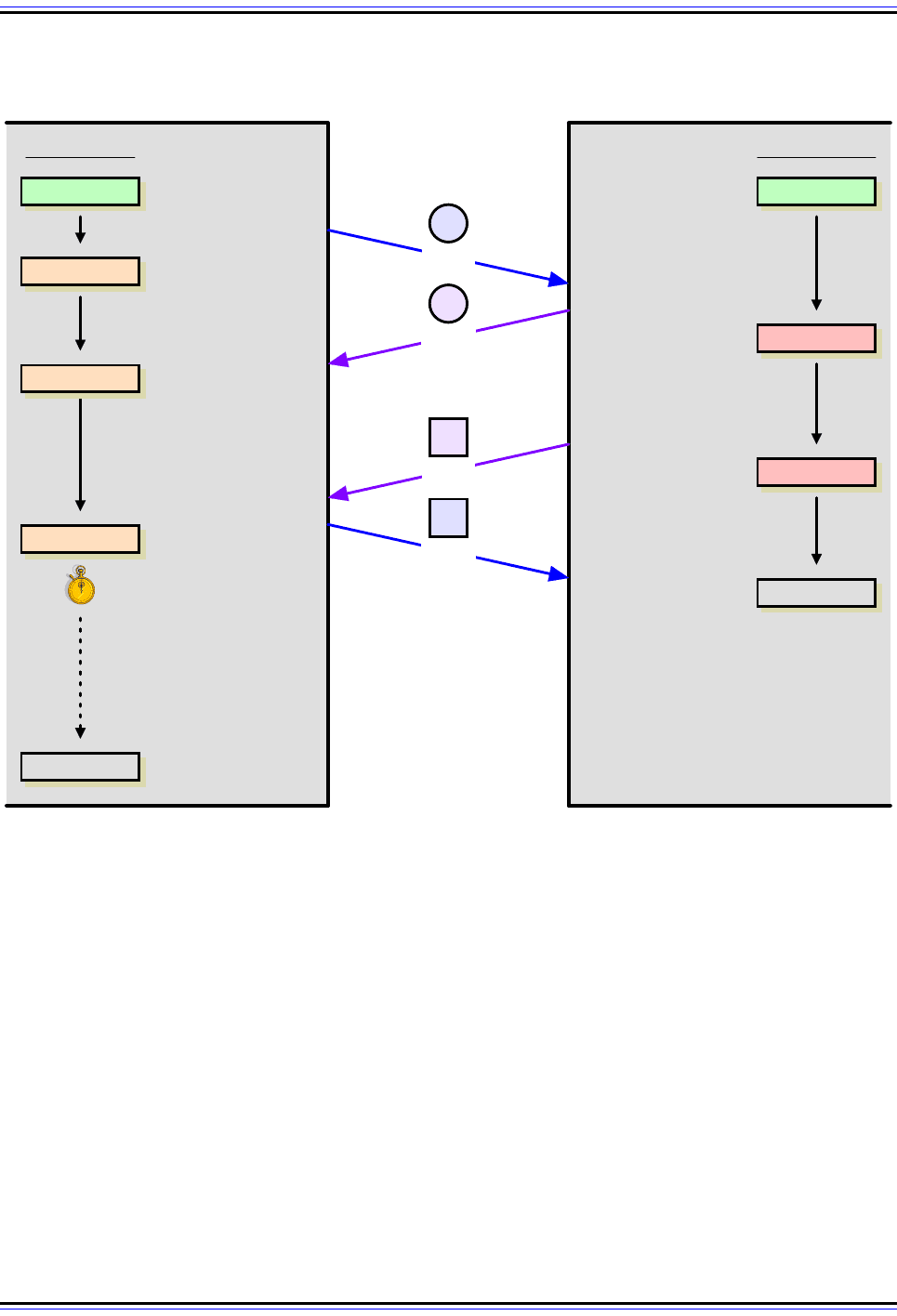
The TCP/IP Guide - Version 3.0 (Contents) ` 885 _ © 2001-2005 Charles M. Kozierok. All Rights Reserved.
The TIME-WAIT State
The device receiving the initial FIN may have to wait a fairly long time (in networking terms)
in the CLOSE-WAIT state for the application it is serving to indicate that it is ready to shut
down. TCP cannot make any assumptions about how long this will take. During this period
of time, the server in our example above may continue sending data, and the client will
receive it. However, the client will not send data to the server.
Figure 214: TCP Connection Termination Procedure
This diagram shows the conventional termination procedure for a TCP session, with one device initiating
termination and the other responding. In this case the client initiates; it sends a FIN which is acknowledged by
the server. The server waits for the server process to be ready to close and then sends its FIN, which is
acknowledged by the client. The client waits for a period of time to ensure that its ACK is received, before
proceeding to the CLOSED state.
Client Server
Receive Close
Signal From App,
Send FIN
FIN
ACK
App Is Ready To
Close, Send FIN
Receive FIN,
Send ACK
Client State
Wait for ACK and
FIN From Server
FIN-WAIT-1
CLOSED
Server State
Normal Operation
CLOSE-WAIT
Receive FIN,
Send ACK,
Tell App To Close
#1
LAST-ACK
Wait for Server FIN
TIME-WAIT
Wait for ACK
to FIN
Receive ACK
#2
EST ABLISHED EST ABLISHED
Receive ACK
FIN-WAIT-2
FIN
ACK
Wait For Double
M aximum Se gment
Life (MSL) Time
CLOSED
#1
#2
(Wait for App)

The TCP/IP Guide - Version 3.0 (Contents) ` 886 _ © 2001-2005 Charles M. Kozierok. All Rights Reserved.
Eventually, the second device (the server in our example) will send a FIN to close its end of
the connection. The device that originally initiated the close (the client above) will send an
ACK for this FIN. However, the client cannot immediately go to the CLOSED state right after
sending that ACK. The reason is that it must allow time for the ACK to travel to the server.
Normally this will be quick, but delays might result in it being slowed down somewhat.
The TIME-WAIT state is required for two main reasons. The first is to provide enough time
to ensure that the ACK is received by the other device, and to retransmit it if it is lost. The
second is to provide a “buffering period” between the end of this connection and any subse-
quent ones. If not for this period, it is possible that packets from different connections could
be mixed, creating confusion.
The standard specifies that the client should wait double a particular length of time called
the maximum segment lifetime (MSL) before finishing the close of the connection. The TCP
standard defines MSL as being a value of 120 seconds (2 minutes). In modern networks
this is an eternity, so TCP allows implementations to choose a lower value if it is believed
that will lead to better operation.
Simultaneous Connection Termination
Just as it is possible for the normal connection establishment process to be changed if two
devices decide to actively OPEN a connection to each other, it is also possible for two
devices to try to terminate a connection simultaneously. This term “simultaneously” doesn't
mean that they both decide to shut down at exactly the same time—variances in network
delays mean nothing can be simultaneous on an internetwork anyway. It simply means that,
in the example above, the client decides to shut down and sends a FIN, but the server
sends its own FIN before the client's FIN shows up at the server. In that case, a different
procedure is followed, as described in Table 156 and Figure 215.
As you can see, the process is much more symmetric in this case, with both devices transi-
tioning through the same states. In either case the end result is the same, with the
connection in the CLOSED state—meaning no connection. Each TCP will make sure all
outstanding data is sent to the application, sometimes referred to as an implied “push” (see
the description of the “push” function for an explanation of this term). The transmission
control blocks (TCBs) established for the connection in both devices are destroyed when
the connection is closed down.
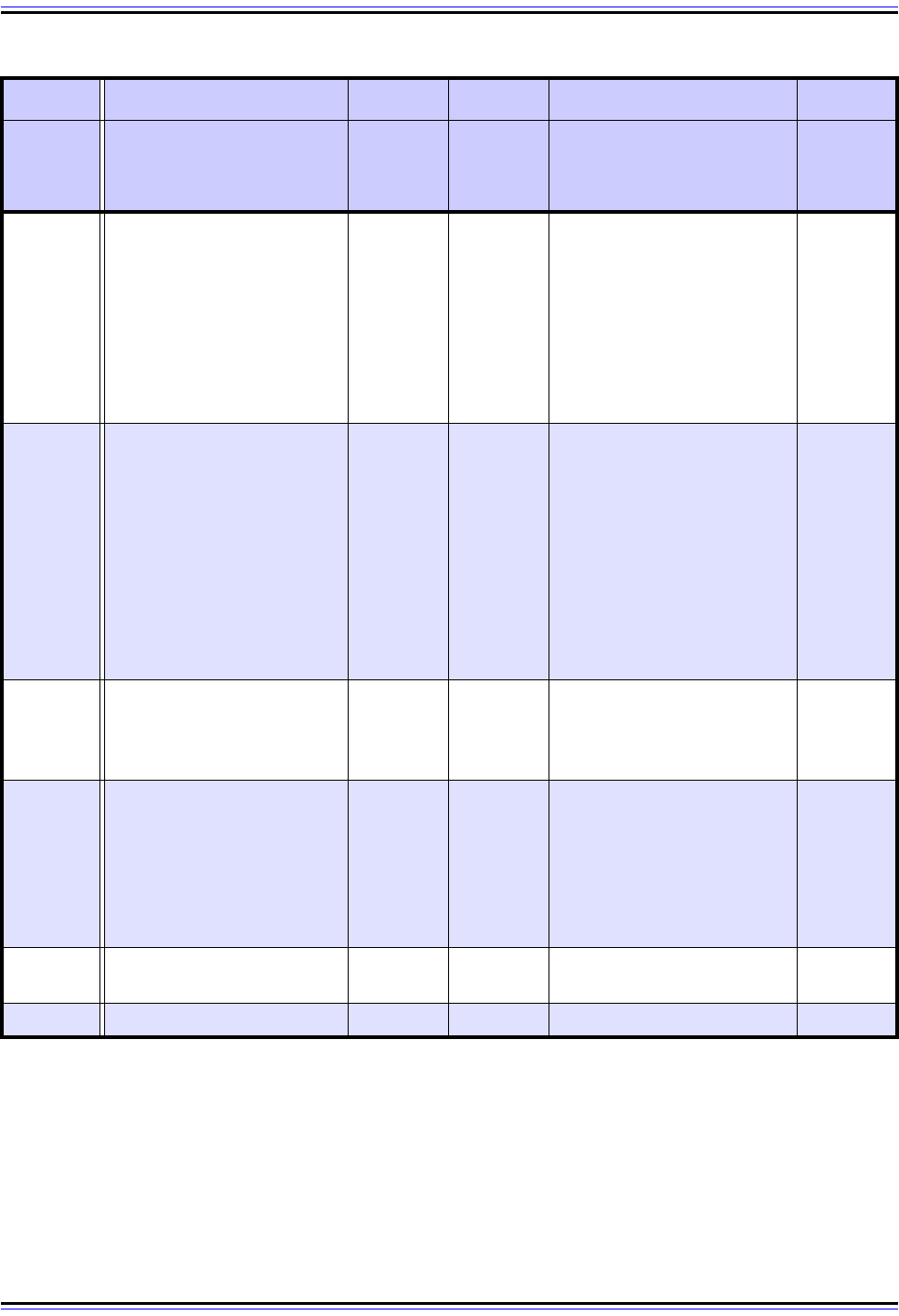
The TCP/IP Guide - Version 3.0 (Contents) ` 887 _ © 2001-2005 Charles M. Kozierok. All Rights Reserved.
Table 156: TCP Simultaneous Connection Termination Procedure
Client Server
Start
State
Action
Transi-
tions To
State
Start
State
Action
Transi-
tions To
State
ESTAB-
LISHED
Client Close Step #1
Transmit: The application
using TCP signals that the
connection is no longer
needed. The TCP on the
client sends the next
segment with the FIN bit
set, indicating a request to
close the connection.
FIN-
WAIT-1
ESTAB-
LISHED
Server Close Step #1
Transmit: Before the server
can receive the FIN sent by
the client, the application on
the server also signals a
close. The server also
sends a FIN.
FIN-
WAIT-1
FIN-
WAIT-1
Server Close Step #1
Receive and Step #2
Transmit: The client has
sent a FIN and is waiting for
it to be acknowledged.
Instead, it receives the FIN
sent by the server. It
acknowledges the server's
close request with an ACK
and continues to wait for its
own ACK.
CLOSING
FIN-
WAIT-1
Client Close Step #1
Receive and Step #2
Transmit: The server has
sent a FIN and is waiting for
it to be acknowledged.
Instead, it receives the FIN
sent by the client. It
acknowledges the client's
close request with an ACK
and continues to wait for its
own ACK.
CLOSING
CLOSING
Client Close Step #2
Receive: The client
receives the ACK for its
FIN.
TIME-
WAIT
CLOSING
Server Close Step #2
Receive: The server
receives the ACK for its FIN.
TIME-
WAIT
TIME-
WAIT
The client waits for a period
of time equal to double the
maximum segment life
(MSL) time. This gives
enough time to ensure the
ACK it sent to the server
was received.
—
TIME-
WAIT
The server waits for a period
of time equal to double the
maximum segment life
(MSL) time. This gives
enough time to ensure the
ACK it sent to the client was
received.
—
TIME-
WAIT
The timer expires after
double the MSL time.
CLOSED
TIME-
WAIT
The timer expires after
double the MSL time.
CLOSED
CLOSED The connection is closed. — CLOSED The connection is closed. —
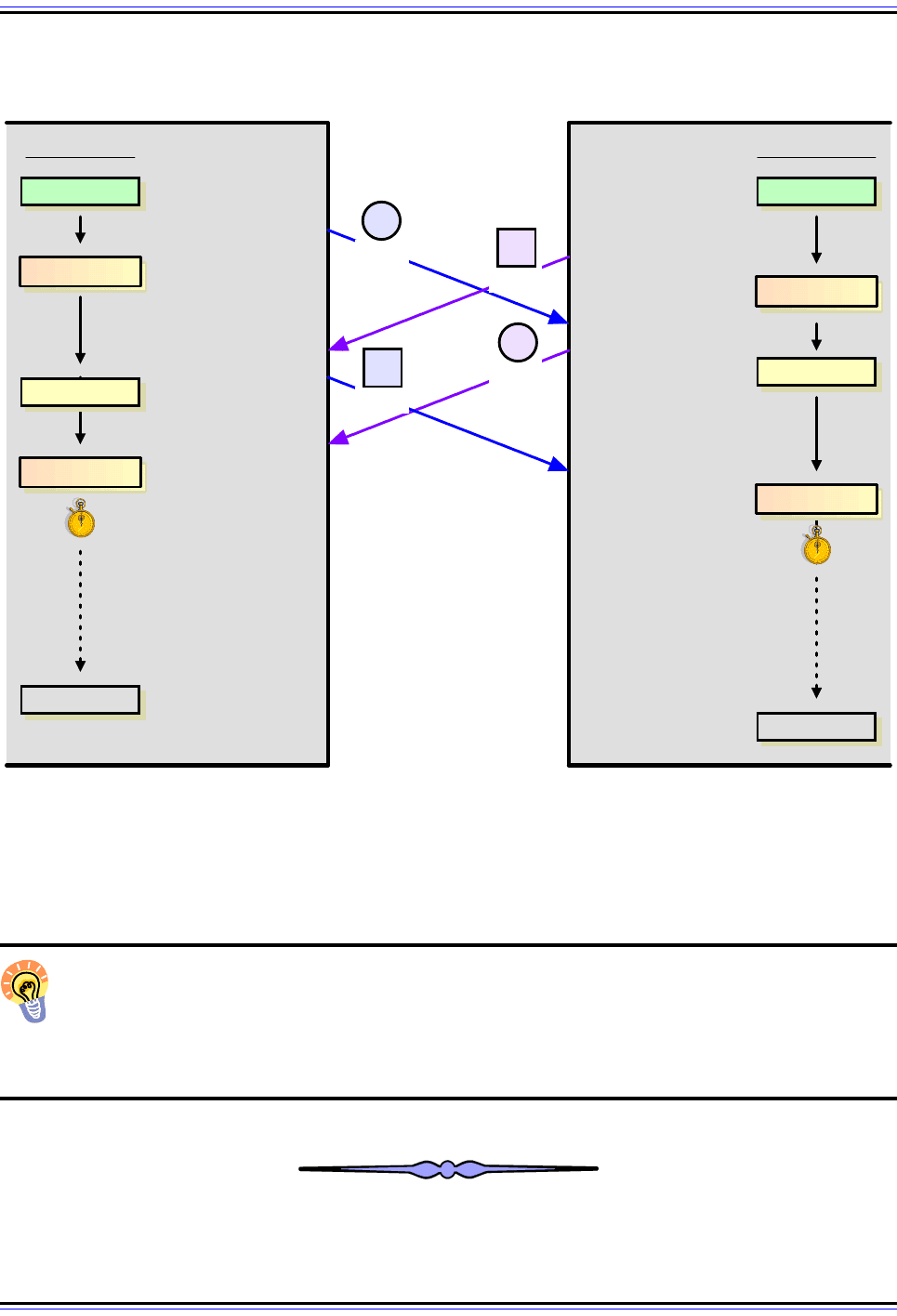
The TCP/IP Guide - Version 3.0 (Contents) ` 888 _ © 2001-2005 Charles M. Kozierok. All Rights Reserved.
Key Concept: Just as two devices can simultaneously open a TCP session, they
can terminate it simultaneously as well. In this case a different state sequence is
followed, with each device responding to the other’s FIN with an ACK, waiting for
receipt of its own ACK, and pausing for a period of time to ensure that its ACK is received
by the other device before ending the connection.
Figure 215: TCP Simultaneous Connection Termination Procedure
Under certain circumstances both devices may decide to terminate a connection simultaneously, or nearly
simultaneously. In this case each sends a FIN and before getting an ACK for it, receives the other device’s
FIN. Each acknowledges the other’s FIN and waits for a period of time before closing the connection. Note the
transition through the CLOSING state, which is only used as part of simultaneous termination.
Client Server
Receive Close
Signal From App,
Send FIN
Receive FIN From
Client, Send ACK
Client State
Receive FIN From
Server, Send ACK
FIN-WAIT-1
CLOSED
Server State
CLOSING
Receive Close
Signal From App,
Send FIN
TIME-WAIT
Receive ACK
EST ABLISHED EST ABLISHED
Receive ACK
CLOSING
Wait For Double
M aximum Se gment
Life (MSL) Time
CLOSED
FIN-WAIT-1
Wait For Double
M aximum Se gment
Life (MSL) Time
TIME-WAIT
FIN
#1
ACK
#2
FIN
#1
ACK
#2
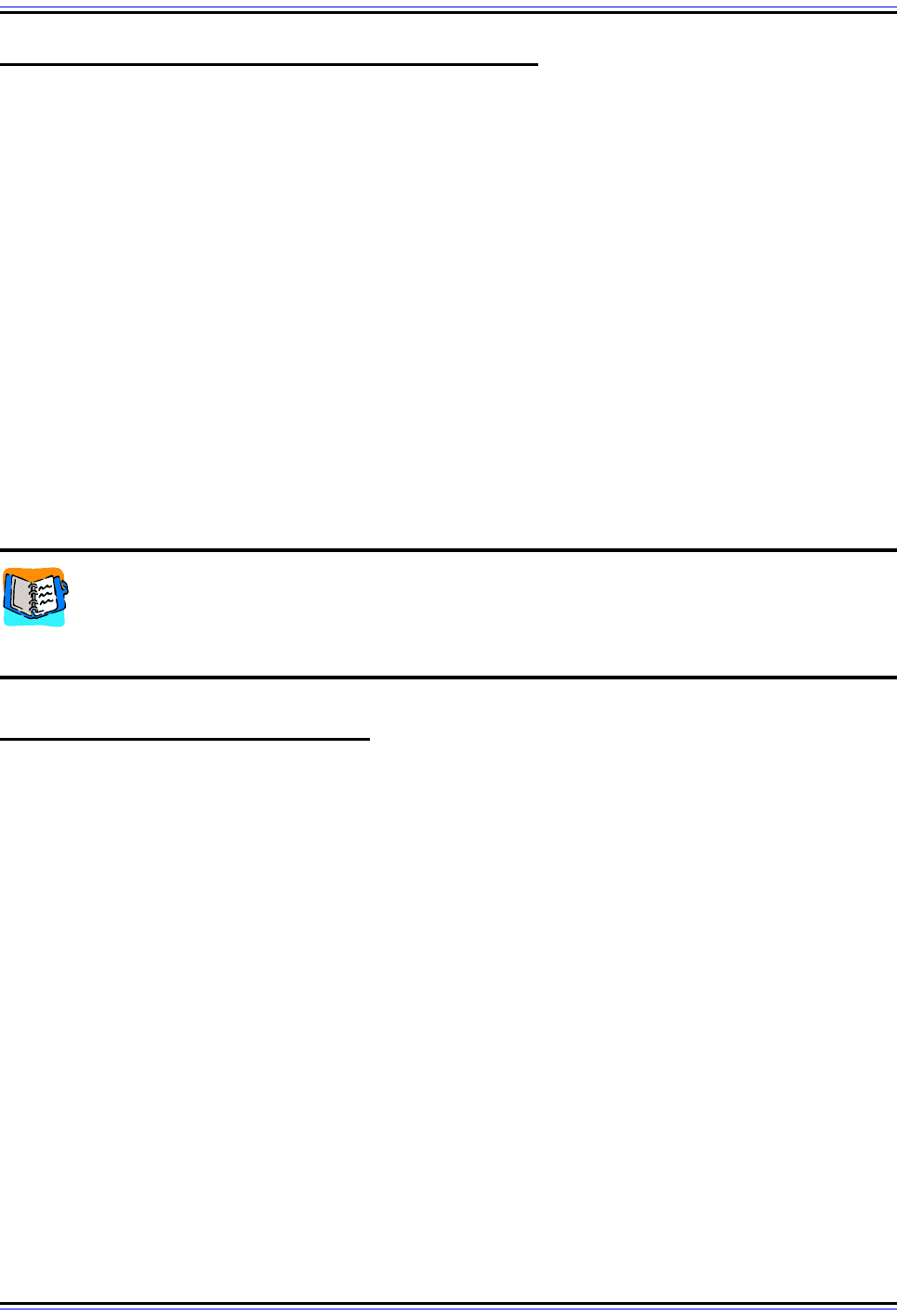
The TCP/IP Guide - Version 3.0 (Contents) ` 889 _ © 2001-2005 Charles M. Kozierok. All Rights Reserved.
TCP Message Formatting and Data Transfer
The previous section described how two devices using the Transmission Control Protocol
establish a TCP connection, as well as how that connection is managed and eventually
terminated. While connections are a key part of how TCP works, they are really a means to
the ultimate end of the protocol: sending data. Employing the TCP sliding window
mechanism, a special segment format and several features, TCP devices are able to
package and send data over the connection, enabling applications to communicate.
In this section, I describe the actual mechanism by which TCP messages are formatted and
data is transferred between devices. I begin with a look at the important TCP segment
format, which describes the fields in each TCP message and how they are used. I provide a
description of the method used to calculate the checksum in TCP (as well as UDP)
messages, and the reason why a special “pseudo header” is used. I discuss the Maximum
Segment Size (MSS) parameter and its significance. I then talk about exactly how the
sliding window mechanism is used to transfer and acknowledge data. I conclude with a
description of two special data transfer features: the “push” feature for immediate data
transfer, and the “urgent” feature for priority data transfer.
Background Information: This section assumes that you are already familiar with
TCP concepts such as sequence numbers, segments, and the basics of the TCP
sliding window mechanism. If you are not, I’d strongly recommend reading the TCP
fundamentals section before proceeding here.
TCP Message (Segment) Format
In the TCP fundamentals section, I described one of the most interesting jobs that TCP
performs: it allows an application to send data as an unstructured sequence of bytes, trans-
parently packaging that data in distinct messages as required by the underlying protocol
that TCP uses (normally the Internet Protocol, of course). TCP messages are called
segments, the name referring to the fact that each segment is a portion of the overall data
stream passing between the devices.
Roles Performed by TCP Segments
TCP segments are very much “jack of all trade” messages—they are flexible and serve a
variety of purposes. A single field format is used for all segments, with a number of header
fields that implement the many functions and features for which TCP is responsible. One of
the most notable characteristics of TCP segments is that they are designed to carry both
control information and data simultaneously. This reduces the number of segments sent,
since they can perform more than one function.
For example, there is no need to send separate acknowledgments in TCP because each
TCP message includes a field for an acknowledgment byte number. Similarly, one can
request that a connection be closed while sending data in the same message. The nature of
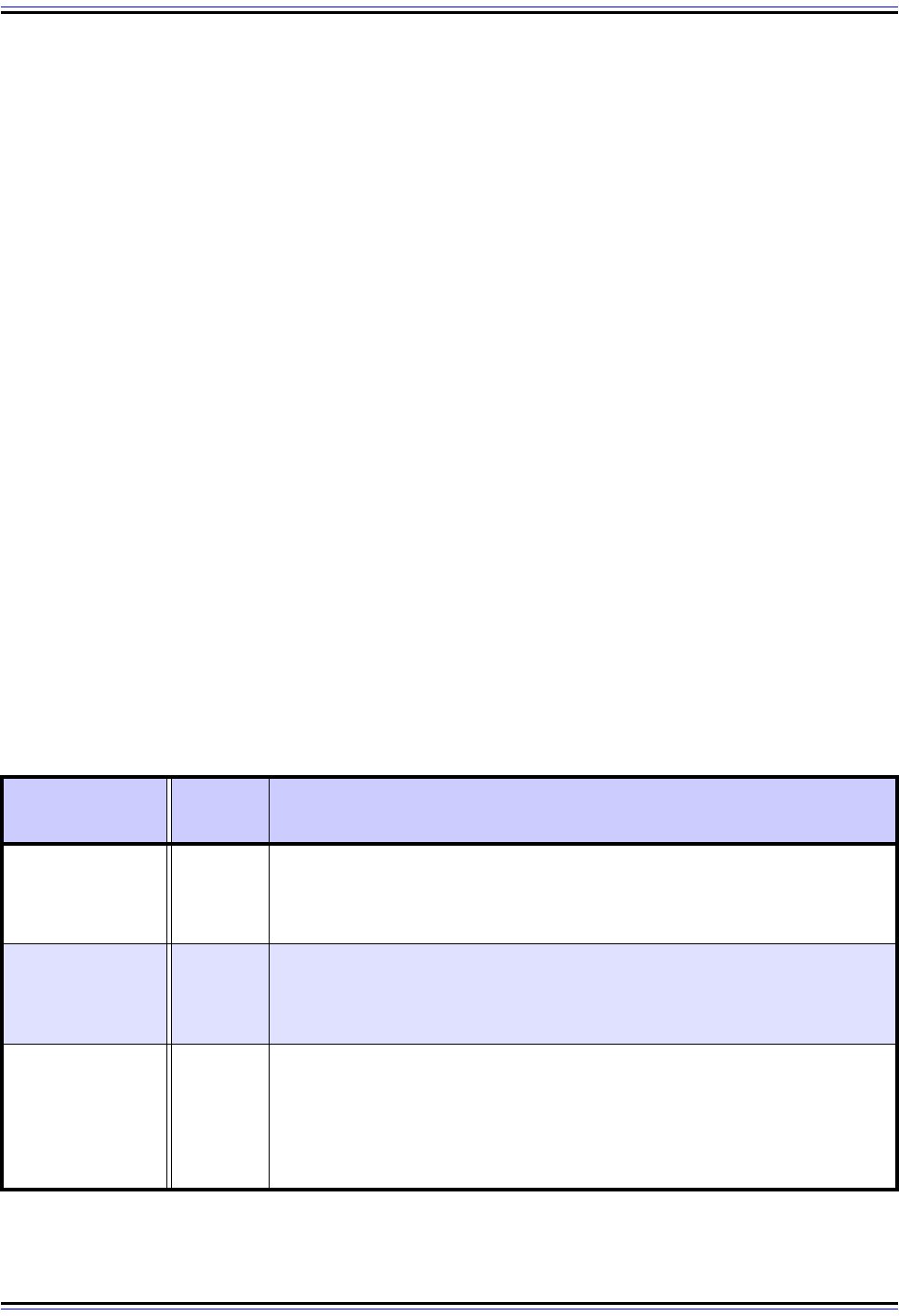
The TCP/IP Guide - Version 3.0 (Contents) ` 890 _ © 2001-2005 Charles M. Kozierok. All Rights Reserved.
each TCP segment is indicated through the use of several special control bits. More than
one bit can be sent to allow a segment to perform multiple functions, such as when a bit is
used to specify an initial sequence number and acknowledge receipt of another such
segment at the same time.
TCP Header Field Functions
The price we pay for this flexibility is that the TCP header is large: 20 bytes for regular
segments and more for those carrying options. This is one of the reasons why some
protocols prefer to use UDP if they don't need TCP's features. The TCP header fields are
used for the following general purposes:
☯ Process Addressing: The processes on the source and destination devices are
identified using port numbers.
☯ Sliding Window System Implementation: Sequence numbers, acknowledgment
numbers and window size fields implement the TCP sliding window system.
☯ Control Bits and Fields: Special bits that implement various control functions, and
fields that carry pointers and other data needed for them.
☯ Carrying Data: The Data field carries the actual bytes of data being sent between
devices.
☯ Miscellaneous Functions: A checksum for data protection and options for
connection setup.
TCP Segment Format
The format for TCP messages (segments) is described fully in Table 157 and Figure 216.
Table 157: TCP Segment Format (Page 1 of 3)
Field Name
Size
(bytes)
Description
Source Port 2
Source Port: The 16-bit port number of the process that originated the
TCP segment on the source device. This will normally be an ephemeral
(client) port number for a request sent by a client to a server, or a well-
known/registered (server) port number for a reply from a server to a client.
Destination Port 2
Destination Port: The 16-bit port number of the process that is the
ultimate intended recipient of the message on the destination device. This
will usually be a well-known/registered (server) port number for a client
request, or an ephemeral (client) port number for a server reply.
Sequence
Number
4
Sequence Number: For normal transmissions, the sequence number of
the first byte of data in this segment. In a connection request (SYN)
message, this carries the initial sequence number (ISN) of the source TCP.
The first byte of data will be given the next sequence number after the
contents of this field, as described in the topic on sequence number
synchronization.
